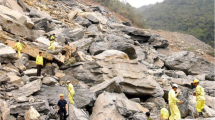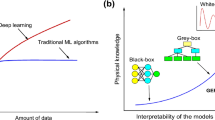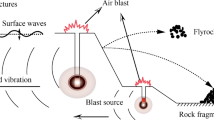Abstract
Entry-type mining methods, such as cut and fill method, play a significant role in underground mining, and they are still suitable methods for extracting deposits with irregular shapes and with weak host rocks. In these mining methods, the stability of the open spans is important for improving worker safety and increasing ore recovery. This study focuses on the application of six data mining classification methods, namely multinomial logistic regression (MLR), classification and regression trees (CART), logistic model tree (LMT), decision tree (J48), multivariate adaptive regression spline (MARS), and gene expression programming (GEP), in order to develop predictive models for stability assessment of underground entry-type excavations. For this purpose, a database containing 399 case histories of entry-type excavations from seven Canada underground mines was used. These models predict the stability status of entry-type excavations based on two input parameters, dimensions of the span and rock mass rating (RMR). The performance of developed models was evaluated using six performance metrics namely accuracy (ACC), sensitivity (SE), precision (PR), Matthew’s correlation coefficient (MCC), area under the receiver operating characteristic (ROC) curve (AUC), and performance index (PI). The results showed that all developed models can be used to predict the excavation stability, but the comparison of models indicated that the J48 model provides the highest performance with ACC = 0.900, SE = 0.869, PR = 0.922, MCC = 0.835, AUC = 0.891, and PI = 4.417. Thus, the proposed J48 model can be applied to identify the susceptibility of span instability in the entry-type mining, and if instability has been predicted, the necessary measures, including the use of suitable support systems, can be considered to reduce the casualties resulting from span instability.











Similar content being viewed by others
Data Availability
Enquiries about data availability should be directed to the authors.
References
García-Gonzalo E, Fernández-Muñiz Z, Nieto PJG et al (2016) Hard-rock stability analysis for span design in entry-type excavations with learning classifiers. Materials (Basel) 9:1–19. https://doi.org/10.3390/ma9070531
Zhou J, Huang S, Qiu Y (2022) Optimization of random forest through the use of MVO, GWO and MFO in evaluating the stability of underground entry-type excavations. Tunn Undergr Sp Technol 124. https://doi.org/10.1016/j.tust.2022.104494
Goh ATC, Zhang Y, Zhang R et al (2017) Evaluating stability of underground entry-type excavations using multivariate adaptive regression splines and logistic regression. Tunn Undergr Sp Technol 70:148–154. https://doi.org/10.1016/j.tust.2017.07.013
Lang BDA (1994) Span design for entry-type excavations. University of British Columbia, Vancouver, BC, Canada. MSc thesis
Kumar P (2003) Development of empirical and numerical design techniques inburst prone groundat the Red Lake Mine. University of British Columbia, Vancouver, BC, Canada. MSc thesis
Wang M, Cai M (2022) Numerical modeling of stand-up time of tunnels considering time-dependent deformation of jointed rock masses. Rock Mech Rock Eng 55:4305–4328. https://doi.org/10.1007/s00603-022-02871-2
Barton N, Lien R, Lunde J (1974) Engineering classification of rock masses for the design of rock support. Rock Mech 6:189–236. https://doi.org/10.1007/BF01239496
Bieniawski ZT (1976) Rock mass classifications in rock engineering. In: proceedings of the symposium on exploration for rock engineering, Johannesburg, South Africa, pp 97–106
Bieniawski ZT (1989) Engineering rock mass classifications: a complete manual for engineers and geologists in mining, civil, and petroleum engineering. Wiley, New York
Potvin Y (1988) Empirical open stope design in Canada. University of British Columbia, Vancouver, BC, Canada. PhD thesis
Laubscher DH (1990) A geomechanics classification system for the rating of rock mass in mine design. J S Afr Inst Min Metall 90:257–273
Molinda GM, Mark C (1993) The coal mine roof rating (CMRR)-a practical rock mass classification for coal mines. In: proceedings of the 12th international conference on ground control in mining, Morgantown, WV, pp 92–103
Ghasemi E, Gholizadeh H (2019) Prediction of squeezing potential in tunneling projects using data mining-based techniques. Geotech Geol Eng 37:1523–1532. https://doi.org/10.1007/s10706-018-0705-6
Zhang J, Wang Y, Sun Y, Li G (2020) Strength of ensemble learning in multiclass classification of rockburst intensity. Int J Numer Anal Methods Geomech 44:1833–1853. https://doi.org/10.1002/nag.3111
Kadkhodaei MH, Ghasemi E, Mahdavi S (2023) Modelling tunnel squeezing using gene expression programming: a case study. Proc Inst Civil Eng-Geotech Eng 176:567–581. https://doi.org/10.1680/jgeen.22.00151
Guo D, Chen H, Tang L et al (2022) Assessment of rockburst risk using multivariate adaptive regression splines and deep forest model. Acta Geotech 17:1183–1205. https://doi.org/10.1007/s11440-021-01299-2
Ghasemi E, Kalhori H, Bagherpour R (2017) Stability assessment of hard rock pillars using two intelligent classification techniques: a comparative study. Tunn Undergr Space Technol 63:32–37. https://doi.org/10.1016/j.tust.2017.05.012
Adoko AC, Saadaari F, Mireku-Gyimah D et al (2022) A feasibility study on the implementation of neural network classifiers for open stope design. Geotech Geol Eng 40:677–696. https://doi.org/10.1007/s10706-021-01915-8
Zhao X, Niu J (2020) Method of predicting ore dilution based on a neural network and its application. Sustainability 12(4):1550. https://doi.org/10.3390/su12041550
Wang J, Milne D, Pakalnis R (2002) Application of a neural network in the empirical design of underground excavation spans. Inst Min Metall Trans Sect A Min Technol 111. https://doi.org/10.1179/mnt.2002.111.1.73
Ouchi AM (2008) Empirical design of span openings in weak rock. University of British Columbia, Vancouver, BC, Canada. MSc thesis
Zhou J, Huang S, Tao M et al (2022) Stability prediction of underground entry-type excavations based on particle swarm optimization and gradient boosting decision tree. Undergr Sp. https://doi.org/10.1016/j.undsp.2022.08.002
Hosmer DW, Lemeshow S (1989) Applied logistic regression. Wiley, New York
Abdel-Kader FH (2011) Digital soil mapping at pilot sites in the northwest coast of Egypt: a multinomial logistic regression approach. Egypt J Remote Sens Space Sci 14:29–40. https://doi.org/10.1016/j.ejrs.2011.04.001
Rahmani SR, Libohova Z, Ackerson JP, Schulze DG (2023) Estimating natural soil drainage classes in the Wisconsin till plain of the Midwestern U.S.A. based on lidar derived terrain indices: Evaluating prediction accuracy of multinomial logistic regression and machine learning algorithms. Geoderma Reg 35:e00728. https://doi.org/10.1016/j.geodrs.2023.e00728
Madani N, Maleki M, Soltani-Mohammadi S (2022) Geostatistical modeling of heterogeneous geo-clusters in a copper deposit integrated with multinomial logistic regression: an exercise on resource estimation. Ore Geol Rev 150:105132. https://doi.org/10.1016/j.oregeorev.2022.105132
Witten I, Frank E (2005) Practical machine learning tools and techniques, 2nd edn. Morgan Kaufmann, Burlington
Breiman L, Freidman J, Olshen R, Stone C (1984) Classification and regression trees. Routledge, New York
Salimi A, Faradonbeh RS, Monjezi M, Moormann C (2018) TBM performance estimation using a classification and regression tree (CART) technique. Bull Eng Geol Environ 77:429–440. https://doi.org/10.1007/s10064-016-0969-0
Hasanipanah M, Faradonbeh RS, Amnieh HB et al (2017) Forecasting blast-induced ground vibration developing a CART model. Eng Comput 33:307–316. https://doi.org/10.1007/s00366-016-0475-9
Ghasemi E, Amnieh HB, Bagherpour R (2016) Assessment of backbreak due to blasting operation in open pit mines: a case study. Environ Earth Sci 75:552. https://doi.org/10.1007/s12665-016-5354-6
Rutkowski L, Jaworski M, Pietruczuk L, Duda P (2014) The CART decision tree for mining data streams. Inf Sci 266:1–15. https://doi.org/10.1016/j.ins.2013.12.060
IBM Crop (2015) IBM SPSS statistics for Windows Version 23.0. IBM Crop, Armonk
Kaur G, Chhabra A (2014) Improved J48 classification algorithm for the prediction of diabetes. Int J Comput Appl 98:13–17. https://doi.org/10.5120/17314-7433
Amirkiyaei V, Ghasemi E (2022) Stability assessment of slopes subjected to circular-type failure using tree-based models. Int J Geotech Eng 16:301–311. https://doi.org/10.1080/19386362.2020.1862538
Landwehr N, Hall M, Frank E (2005) Logistic model trees. Mach Learn 59:161–205. https://doi.org/10.1007/s10994-005-0466-3
Tien Bui D, Tuan TA, Klempe H et al (2016) Spatial prediction models for shallow landslide hazards: a comparative assessment of the efficacy of support vector machines, artificial neural networks, kernel logistic regression, and logistic model tree. Landslides 13:361–378. https://doi.org/10.1007/s10346-015-0557-6
Chen W, Xie X, Wang J, Pradhan B, Hong H, Tien Bui D, Duan Z, Ma J (2017) A comparative study of logistic model tree, random forest, and classification and regression tree models for spatial prediction of landslide susceptibility. CATENA 151:147–160. https://doi.org/10.1016/j.catena.2016.11.032
Kadkhodaei MH, Ghasemi E (2022) Development of a semi-quantitative framework to assess rockburst risk using risk matrix and logistic model tree. Geotech Geol Eng 40:3669–3685. https://doi.org/10.1007/s10706-022-02122-9
Friedman JH (1991) Multivariate adaptive regression splines. Ann Stat 19:1–67
Zhang W (2020) MARS applications in geotechnical engineering systems. Springer, Singapore
Zhang W, Goh ATC, Zhang Y (2016) Multivariate adaptive regression splines application for multivariate geotechnical problems with big data. Geotech Geol Eng 34:193–204. https://doi.org/10.1007/s10706-015-9938-9
Zabihi M, Pourghasemi HR, Pourtaghi ZS, Behzadfar M (2016) GIS-based multivariate adaptive regression spline and random forest models for groundwater potential mapping in Iran. Environ Earth Sci 75:665. https://doi.org/10.1007/s12665-016-5424-9
Zhang WG, Goh ATC (2013) Multivariate adaptive regression splines for analysis of geotechnical engineering systems. Comput Geotech 48:82–95. https://doi.org/10.1016/j.compgeo.2012.09.016
Naser AH, Badr AH, Henedy SN et al (2022) Application of multivariate adaptive regression splines (MARS) approach in prediction of compressive strength of eco-friendly concrete. Case Stud Constr Mater 17:e01262
Park S, Hamm S-Y, Jeon H-T, Kim J (2017) Evaluation of logistic regression and multivariate adaptive regression spline models for groundwater potential mapping using R and GIS. Sustainability 9(7):1157. https://doi.org/10.3390/su9071157
Sirimontree S, Jearsiripongkul T, Lai VQ, Eskandarinejad A, Lawongkerd J, Seehavong S, Thongchom C, Nuaklong P, Keawsawasvong S (2022) Prediction of penetration resistance of a spherical penetrometer in clay using multivariate adaptive regression splines model. Sustainability 14(6):3222. https://doi.org/10.3390/su14063222
StatSoftInc (2014) STATISTICA (Data Analysis Software System) Version 12. StatSoft Inc, Oklahoma
Ferreira C (2001) Gene expression programming: a new adaptive algorithm for solving problems. Complex Syst 13:87–129
Ferreira C (2006) Gene expression programming: mathematical modeling by an artificial intelligence. Springer-Verlag, Berlin
Kadkhodaei MH, Ghasemi E (2019) Development of a GEP model to assess CERCHAR abrasivity index of rocks based on geomechanical properties. 10:917–928. https://doi.org/10.22044/jme.2019.8141.1684
Shirani Faradonbeh R, Taheri A (2019) Long-term prediction of rockburst hazard in deep underground openings using three robust data mining techniques. Eng Comput 35:659–675. https://doi.org/10.1007/s00366-018-0624-4
Gullu H (2012) Prediction of peak ground acceleration by genetic expression programming and regression: a comparison using likelihood-based measure. Eng Geol 141–142:92–113. https://doi.org/10.1016/j.enggeo.2012.05.010
Hajihassani M, Abdullah SS, Asteris PG, Armaghani DJ (2019) A gene expression programming model for predicting tunnel convergence. Appl Sci 9:4650. https://doi.org/10.3390/app9214650
Özbek AB, Unsal M, Dikec A (2013) Estimating uniaxial compressive strength of rocks using genetic expression programming. J Rock Mech Geotech Eng 5:325–329. https://doi.org/10.1016/j.jrmge.2013.05.006
Naghadehi MZ, Samaei M, Ranjbarnia M, Nourani V (2018) State-of-the-art predictive modeling of TBM performance in changing geological conditions through gene expression programming. Measurement 126:46–57. https://doi.org/10.1016/j.measurement.2018.05.049
Baykasoğlu A, Güllü H, Çanakçı H, Özbakır L (2008) Prediction of compressive and tensile strength of limestone via genetic programming. Expert Syst Appl 35:111–123. https://doi.org/10.1016/j.eswa.2007.06.006
Faradonbeh RS, Hasanipanah M, Amnieh HB et al (2018) Development of GP and GEP models to estimate an environmental issue induced by blasting operation. Environ Monit Assess 190:351. https://doi.org/10.1007/s10661-018-6719-y
Gepsoft (2014) GeneXpro Tools 5.0. Gepsoft, Capelo, Portugal
Yilmaz AE, Demirhan H (2023) Weighted kappa measures for ordinal multi-class classification performance. Appl Soft Comput 134:110020. https://doi.org/10.1016/j.asoc.2023.110020
Zweig MH, Campbell G (1993) Receiver-operating characteristic (ROC) plots: a fundamental evaluation tool in clinical medicine. Clin Chem 39:561–577. https://doi.org/10.1093/clinchem/39.4.561
Author information
Authors and Affiliations
Corresponding author
Ethics declarations
Conflict of Interest
The authors declare no competing interests.
Additional information
Publisher's Note
Springer Nature remains neutral with regard to jurisdictional claims in published maps and institutional affiliations.
Rights and permissions
Springer Nature or its licensor (e.g. a society or other partner) holds exclusive rights to this article under a publishing agreement with the author(s) or other rightsholder(s); author self-archiving of the accepted manuscript version of this article is solely governed by the terms of such publishing agreement and applicable law.
About this article
Cite this article
Jalilian, M., Ghasemi, E. & Kadkhodaei, M.H. Stability Assessment of Open Spans in Underground Entry-Type Excavations by Focusing on Data Mining Methods. Mining, Metallurgy & Exploration 41, 843–858 (2024). https://doi.org/10.1007/s42461-024-00945-z
Received:
Accepted:
Published:
Issue Date:
DOI: https://doi.org/10.1007/s42461-024-00945-z




